The search for the great crested newt
November 12, 2023
November 12, 2023
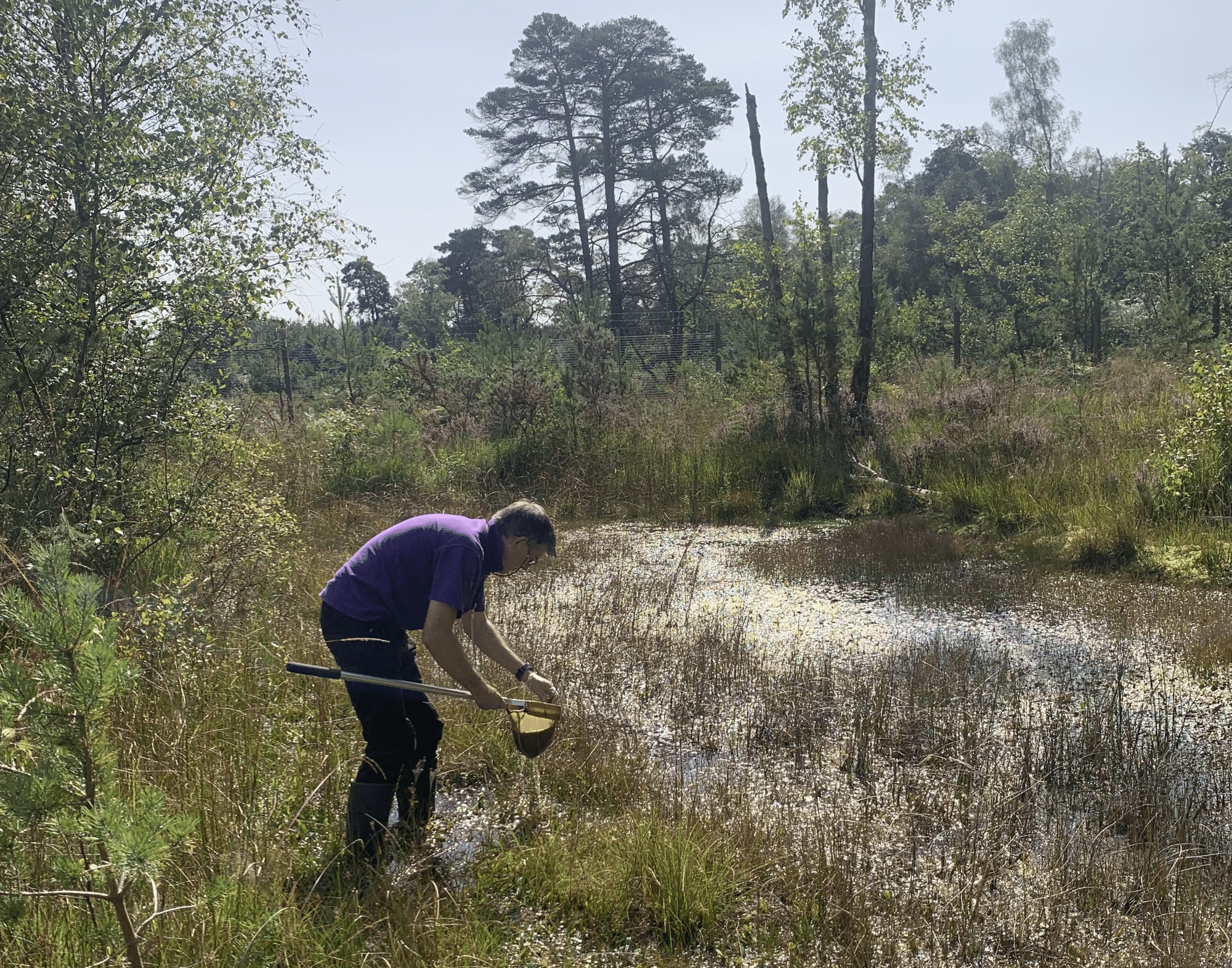
Marwell’s conservation team are diving into action at Eelmoor Marsh SSSI, our heathland restoration site, to search for a special resident – the great crested newt.
The great crested newt is the largest of the UK’s newt species, measuring up to 17 cm. Sporting warty, dark skin with bright orange underbellies, they are easy to identify, especially in spring when the males develop a large a long jagged ridge on their backs, known as a crest.
Unfortunately, our newts are under threat – with population declines primarily due to habitat loss and fragmentation. Due to population declines, they are strictly protected by law – it can be an offence to harm or disturb them or their habitat. In 2018, the Newt Conservation Partnership was founded by the Freshwater Habitats Trust and Amphibian and Reptile Conservation. Their mission is to create and manage high quality newt habitats, with an impressive goal to create or restore at least four new ponds for each one lost through development.
This pioneering plan allows them to choose sites that are just right for the newts – with clean water, good terrestrial habitat, and close to existing populations – all providing a higher chance of survival and allowing the great crested newt to spread naturally across the countryside.
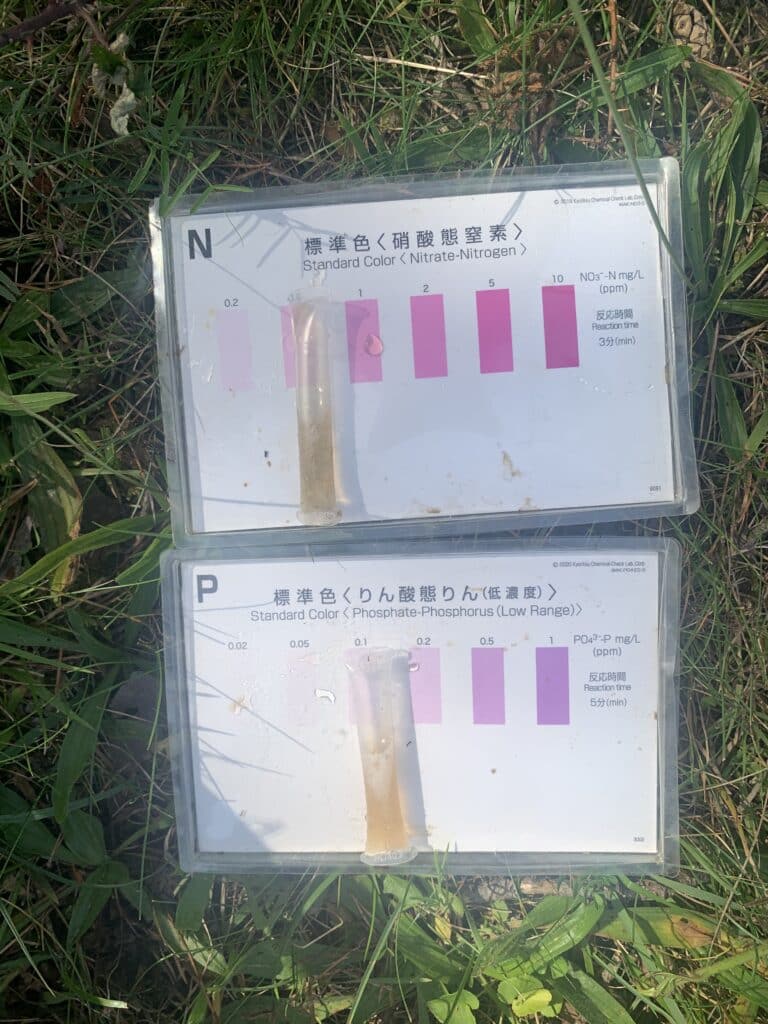
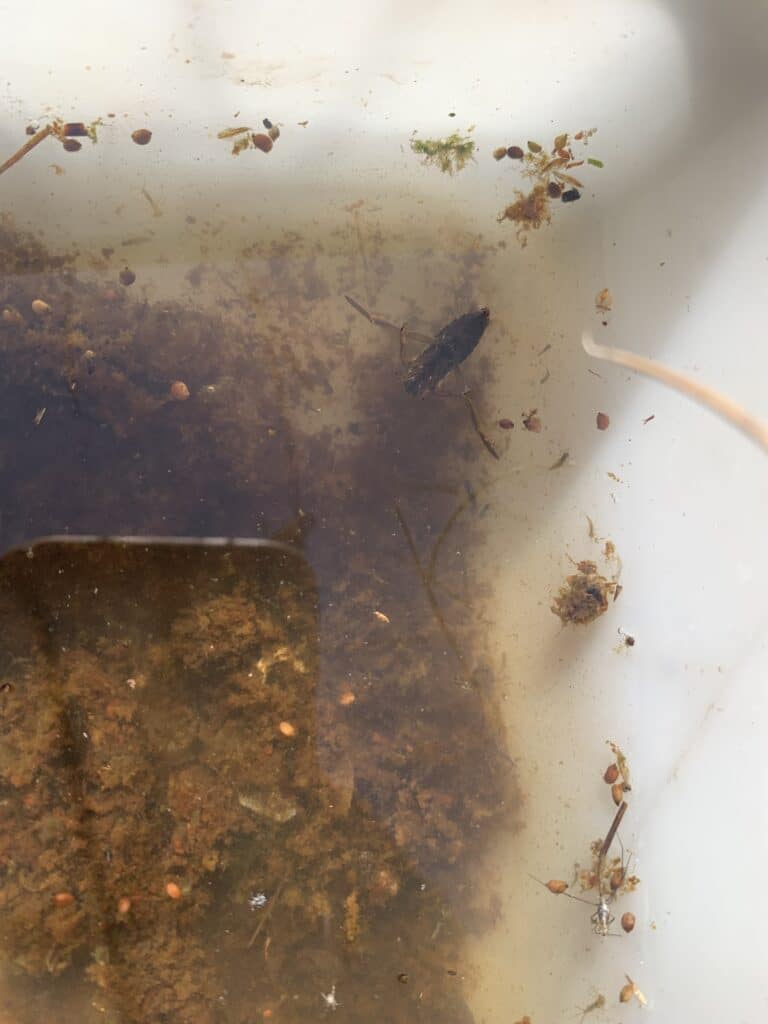
While we have almost three decades of wildlife data from Eelmoor Marsh, this will be our first time conducting formal amphibian surveys. We’ve teamed up with Chris Worgan, Project Officer at the Newt Conservation Partnership, to explore what might be lurking under the water. We took Chris on a grand tour of all the pools that we have created on site, to identify areas of prime newt habitat and test the water quality. The good news is, our ponds have very low nitrate and phosphate levels, demonstrating we have clean water ponds – now rare in many lowland landscapes.
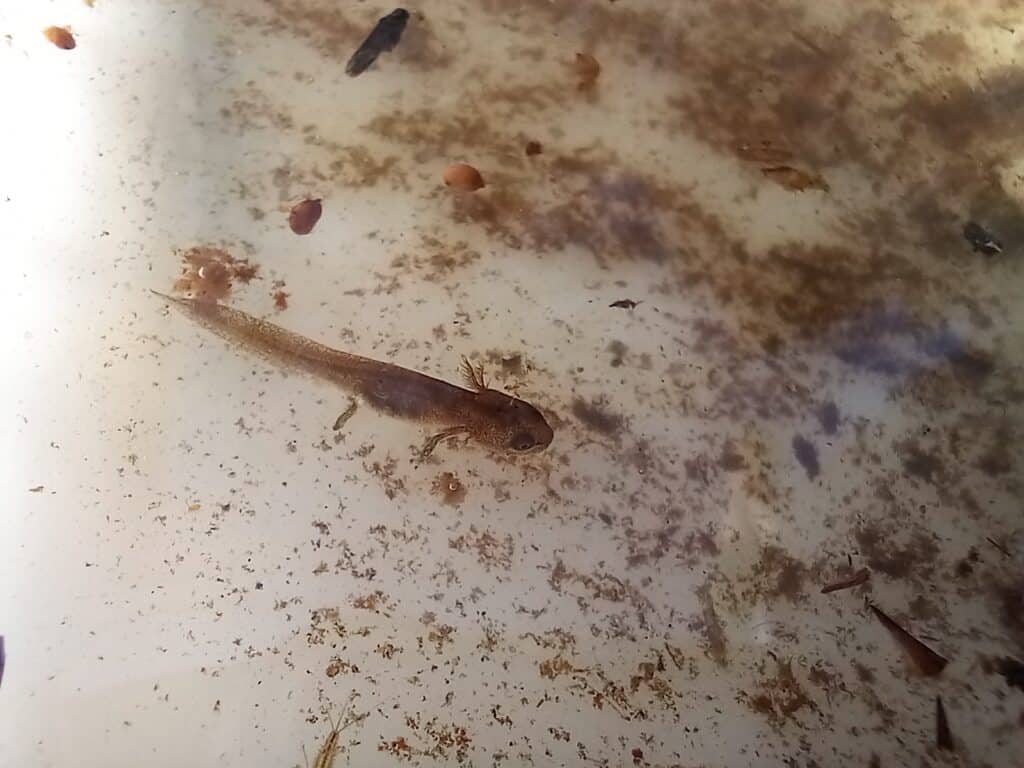
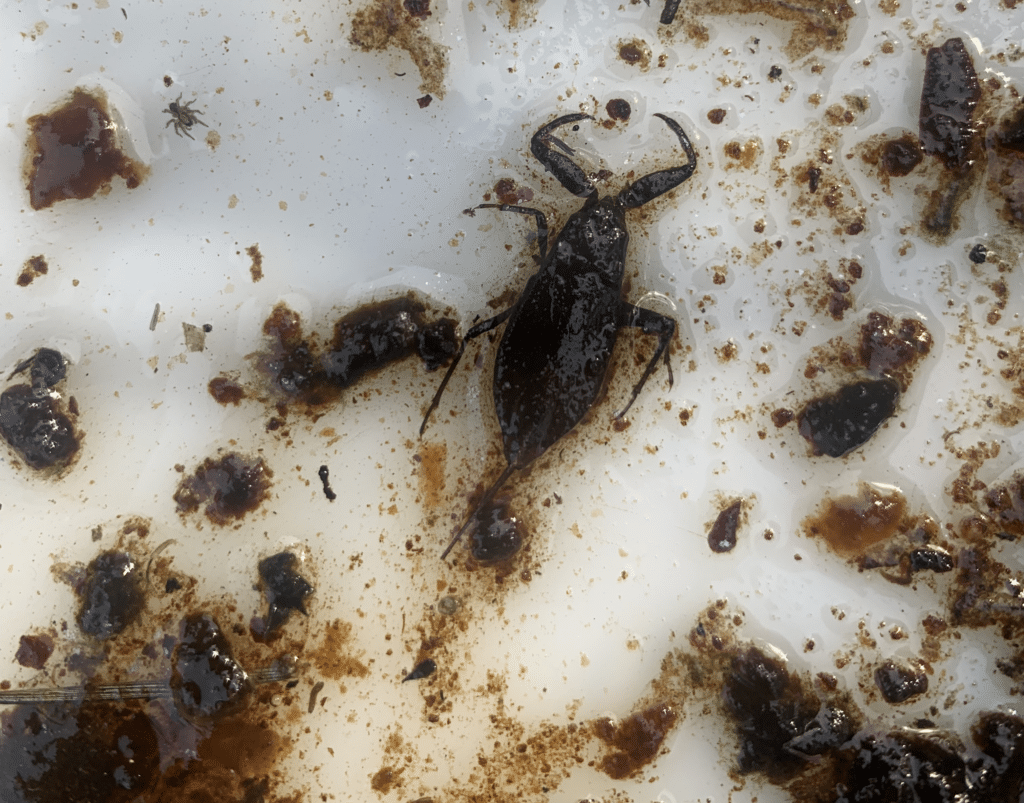
Chris then carried out some initial surveys to see what sort of wildlife is living in our pools. We discovered a bustling underwater world teeming with dragonfly larvae, water scorpions, water beetles, freshwater shrimps, and even newt larvae! While they weren’t great crested newt larvae, it’s a promising sign that our management efforts have created the ideal place for amphibians to thrive.
Next spring, Chris will be returning to Eelmoor for some further newt surveys during their breeding season. Searching for eggs, bottle trapping which is a safe method of catching newts in bottles to count them, using torches to find them in the water, and environmental DNA testing can give us a much more accurate picture of the amphibian life below the surface.
Our newt conservation work isn’t limited to Eelmoor; we are also working closer to home, within the ancient woodlands around the zoo itself. Although there are currently no ponds here, we are teaming up with Chris to spruce up our land and find areas where new habitat could be created. We know we have newt neighbours nearby, and by encouraging their spread we hope to boost their populations and improve the general biodiversity of the local area.
By Carla Broom, Ecologist